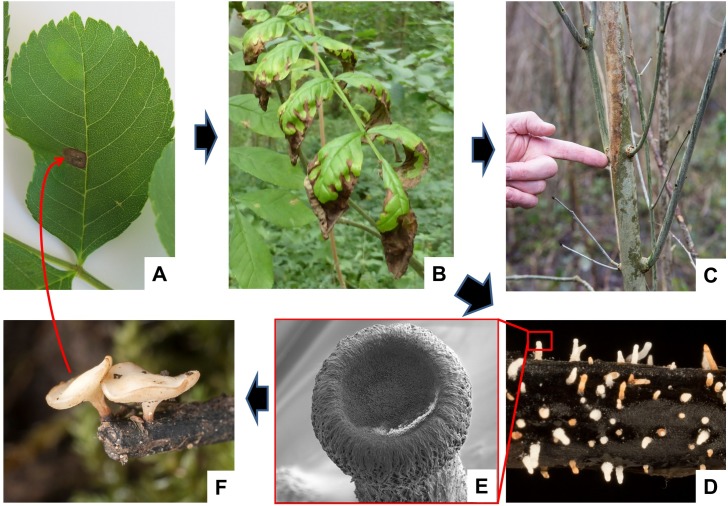Fig 1. Life cycle of the H. fraxineus.
(A) Individual ascospores of Hymenoscyphus fraxineus land on ash tree leaves in early summer months causing necrotic lesions. (B) Heavier infections cause severe symptoms on ash leaves and the fungal mycelium grows down through the leaf stems into the woody parts of the tree, where it continues to grow, causing diamond-shaped lesions (C) that can eventually encircle the branch, cutting off nutrient exchange with the leaves. Infected leaves are shed in autumn and by early summer, the leaf stems show early stages of growth of H. fraxineus prefruiting bodies (D) that are about 0.1 mm in diameter, and one is illustrated by scanning electron microscopy (E). Fertilization of these, probably by conidiosore spermatia, promotes the formation of mature fruiting bodies (F) that fire ascospores up into the air where they are carried to ash leaves to complete the life cycle.

